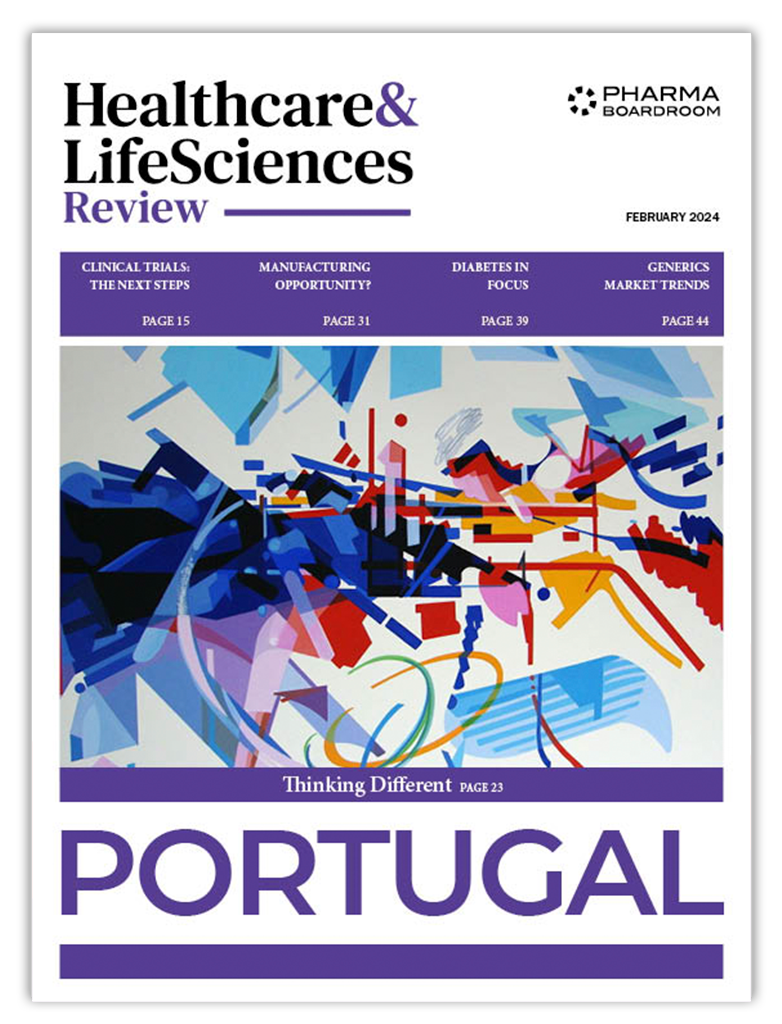Norway, more well-known internationally as an innovation hub for oil & gas and marine biology, is attempting to reverse the trend of reducing numbers of clinical trials and cultivate a domestic healthcare research industry. Drawing on the country’s comprehensive health registries, universal healthcare system, links with its Nordic neighbours, and impressive talent pool, stakeholders are increasingly optimistic that more basic research and clinical trials can be conducted in Norway and that Norwegian innovation can make it from the lab to the patient.
Acknowledging Norway’s relative size lack of experience in medical research, Ole Alexander Opdalshei of the Norwegian Cancer Society is realistic about the nation’s limitations. “Being a small country of five million inhabitants, it is not probable that the next global medical breakthrough will come from Norway,” he notes. However, Opdalshei is keen to note that “On the other hand, we have a lot of good health registries as well as a universal healthcare system and many excellent researchers that publish at a high level and collaborate with their peers at other international cancer research institutions.”
The potential for conducting epidemiological research in Norway is high and there is a generally positive vibe about health research in the country
He continues, “Therefore, the potential for conducting epidemiological research in Norway is high and there is a generally positive vibe about health research in the country. There has been a lot of enthusiasm about Norwegian biotech firms, some of whose ideas have been followed up on by bigger companies. However, clinical studies have been decreasing in number. Reversing this trend is high on the agenda for the industry, clinicians, politicians, and also for the Norwegian Cancer Society. The Ministry of Health has promised to launch a new strategy to increase our clinical studies in December 2020.”
Ketil Widerberg of the Oslo Cancer Cluster is similarly keen to acknowledge both Norway’s current shortcomings as a research destination and its future potential. “We don’t have a company of the size of Novartis or Novo Nordisk located here,” he states. “What we do have is health data and a government that is willing to invest to build a health industry.”
Health Registries
Norway’s comprehensive health registries, stretching back decades and covering the entire Norwegian population, are a key selling point for attracting more clinical research to Norway. Widerberg adds, “We do have some experience where Norwegian registers have been used for Phase IV trials to document for FDA. However, Norway does not have a strong history of developing pharmaceutical companies or conducting large-scale clinical trials. That is about to change. With the need for more real-world data to prove the efficacy of drugs, both individually and in combination with other therapies, more and more firms will look towards countries like Norway with excellent electronic health records.”
With the need for more real-world data to prove the efficacy of drugs, both individually and in combination with other therapies, more and more firms will look towards countries like Norway with excellent electronic health records
However, both public and private sector researchers face significant barriers in attempting to access and utilize this data, something Widerberg is keen to redress. “OCC Norway has put a lot of effort into making the country’s excellent health data more accessible to researchers from both universities and private industry,” he asserts. “A few years ago, I sat on a Ministry of Health committee tasked with solving this accessibility challenge and a new project called Norwegian Health Analytics Platform (www.helsedata.no) has just been launched from this committee’s recommendations, which could pave the way for greater accessibility in the future.”
“I also gave input to the government’s white paper on the health industry that was presented last year by the Ministries of Trade and Health. This paper sets out Norway’s plan to become a top clinical trial destination. We are now looking at how we can continue to utilise our health data and present this asset internationally. The aim is both to attract significant investment from international firms as well as to develop Norwegian companies.”
Universal Healthcare
Norway’s universal healthcare system is also being played up as a boon for researchers. Jon Amund Kyte, head of the Department of Experimental Cancer Treatment at Oslo University Hospital, who is leading the way in terms of research into cutting-edge immuno-oncology and CAR-T therapies in Norway, explains, “One of the most important factors [in terms of attracting clinical trials] is our ability to do long-term follow ups.”
“If you start a trial in the US, you have to recruit considerably more patients than you are actually aiming to get the data from. In Norway, you will get the data and the follow up for almost all participants. The reason for that is the strong national healthcare system with no private alternative. Even if people move around Norway, they will still be within the national healthcare system, so we do not lose patients.”
Nordic Collaboration
Collaboration with the fellow Nordic countries of Sweden, Denmark, Finland, and Iceland has also been identified as key to cultivating a Norwegian research hub, both in terms of knowledge sharing as well as access to a much larger patient pool. “We are not in competition with our neighbours,” proclaims Widerberg. “If Norway is going to build and develop a domestic health industry, it will be done together with the rest of the Nordics.”
He elaborates, “We have a good ongoing dialogue with our Nordic neighbours and some of our employees work from Sweden and Denmark. Each country wants to develop their own industry, but also needs to stand together. For example, if a US company wanted to use new innovative ways to work with health data in clinical studies, the Nordic countries would need to come together to present a unified offer, since each individual country’s population is too small to be really attractive.”
“This is especially true for precision medicine, where you need a population base of at least 20 million [the total population of the Nordic countries is around 27 million – Ed.]. Our national strategies may not necessarily be perfectly aligned, but there is an understanding – strengthened by innovation centres such as Oslo Cancer Cluster – that the Nordic countries need to work together.”
Kyte is similarly sold on the potential of Nordic-wide clinical trials but feels that, “there are a lot of improvements to be made” to actualise this prospect. “The potential is there for really good Nordic collaboration, partly because the healthcare systems are so similar, as well as the fact that in all the Scandinavian countries, apart from Finland, we understand each other… the aim should be for the Nordics to become one region for clinical trials, so that Norwegian patients can go to Sweden and Swedish patients can come to Norway, for example. That would help us a lot, but it would also be advantageous for patients, because they would then have much more choice about which trials to enter.”
He adds, “The Nordic region is not working well in terms of clinical trials, with the main problem the question of who covers travel expenses not covered by the trial itself [as well as] insurance, which generally only covers patients in their own country. These questions remain unanswered, and the patients end up never leaving their country for a trial, because neither the doctor or the patient has the time or energy to work out a special solution.”
Translational Science
Regardless of the quality of Norwegian research, the country lacks companies that have successfully translated innovation from the lab into a therapy that reaches the market and, ultimately, the patient. Widerberg laments, “In the Nordics, we have very good cancer research as well as some large companies working with cancer, but we are not as strong in cancer innovation and translating that science into new companies and projects.”
Kyte confirms, “At our hospital, we are actually very good at bringing ideas through to clinical testing, partly because we have this comprehensive cancer research institute … What is not so strong in Norway is bringing new biotech inventions into companies, and letting those companies grow. We lack a big milieu that could actually take these ideas and bring them to markets. Norway does not have this milieu because it does not have a big biotech or pharmaceutical company.”
This is a gap the Oslo Cancer Cluster itself is aiming to fill. “The aim of Oslo Cancer Cluster is to become a hub for developing and sharing knowledge on cancer innovation – what works, how it should be set up, and how a balance can be struck between governments’ need for control, foundational science, and companies’ need for revenues,” explains Widerberg. “We have already had some real results from this endeavour over the past decade.”
He elaborates, “Thermo Fisher Scientific’s ‘Dynabeads’ technology that makes faster and cheaper DNA-sequencing accessible was tested and developed here. Moreover, Bayer’s USD 2.9 billion acquisition of Algeta in 2019 was a major boost to the Norwegian economy. Norwegian translational research is having a real impact on both patients and the country’s overall economic standing.”
Widerberg does, however, admit that “we have had many ideas and projects that have not materialised. In Norway, as in many countries, there is a situation where researchers explore something new and, when they discover how it works, become disinterested and move on to something else. We need people who are willing to look at how this knowledge can be applied and how it can be useful in a clinical setting. As part of our work at Oslo Cancer Cluster, we look at how to build incentive structures for academics and researchers to move into translational research.”




